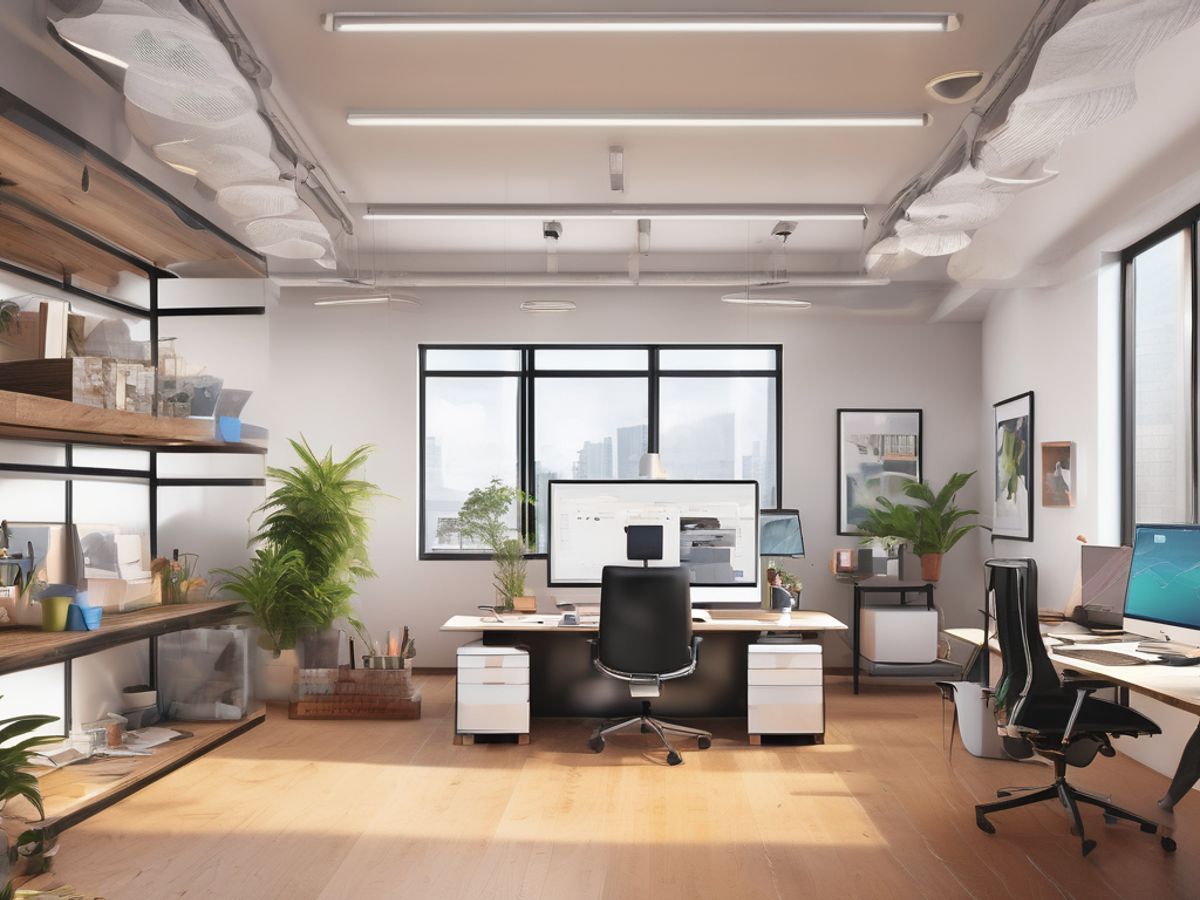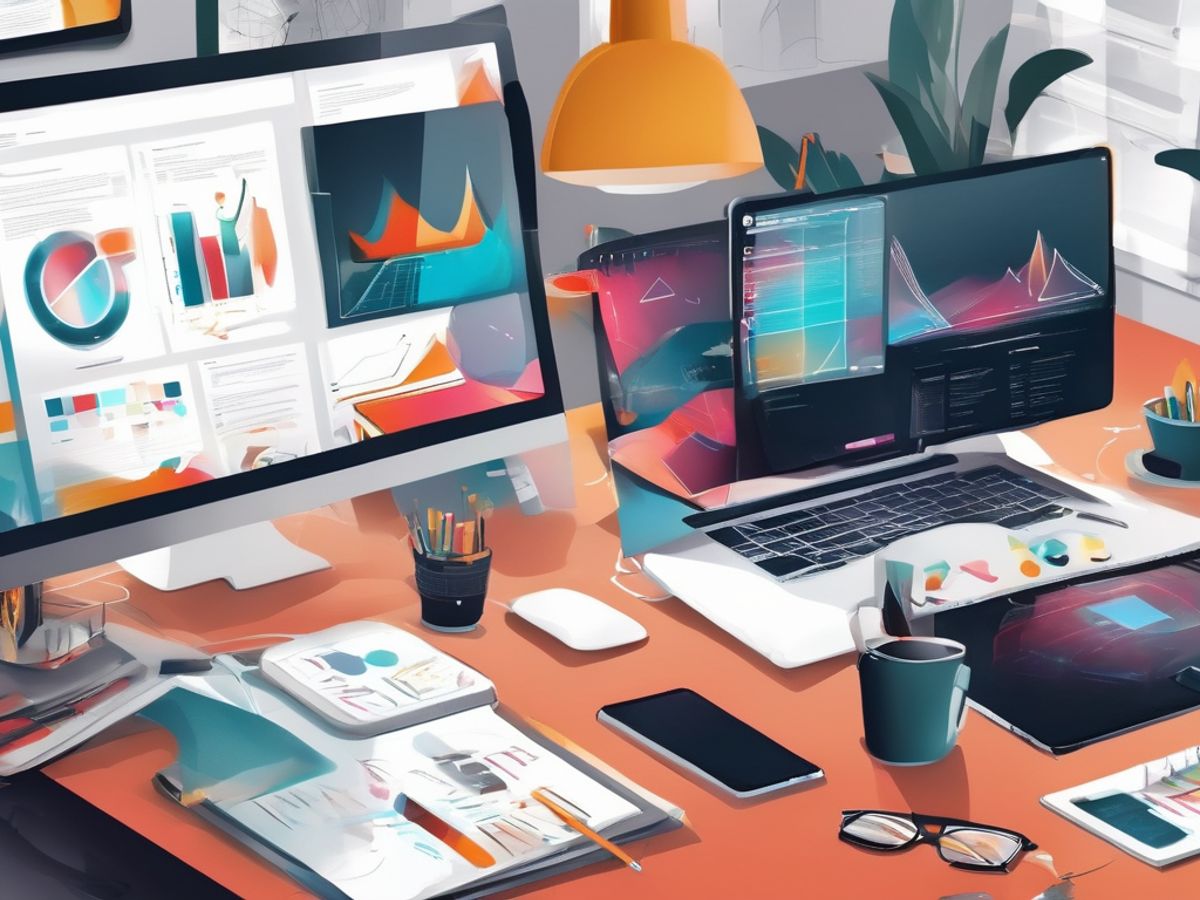As we delve into 2024, it’s crucial for web designers and developers to stay ahead of the curve by understanding and implementing the latest trends in website design. These trends not only enhance the aesthetic appeal of websites but also improve user engagement, accessibility, and overall functionality. In this article, we explore the most significant website design trends that are shaping the digital landscape this year.
Key Takeaways
- Incorporating minimalist influences and glassmorphism can modernize the visual appeal of websites while maintaining user focus on important content.
- Enhancing user experience through responsive design and app-like interfaces ensures that websites are accessible and efficient across all devices.
- Leveraging AI and machine learning can personalize user experiences and optimize website functionalities, setting a new standard in technological integration.
- Adhering to ADA compliance and embracing inclusive design practices are essential for creating accessible and equitable digital spaces.
- Future-proofing websites involves adopting scalable frameworks and continuous improvement cycles to accommodate evolving technologies and user needs.
Emerging Visual Aesthetics in Lead Website Design
Minimalist Influences
In 2024, we are seeing a strong resurgence of minimalist design in lead websites. This trend emphasizes clean lines, ample white space, and a focus on essential elements only, which helps in reducing distractions and improving user focus. Bold typography and monochromatic color schemes are often employed to maintain visual interest and coherence.
Glassmorphism
The adoption of glassmorphism has been notable for its emphasis on transparency and depth. This style uses multi-layered approaches with soft colors, floating elements, and a frosted glass effect to create a sense of depth and layering. It’s particularly effective in backgrounds and for overlaying interfaces, providing a futuristic yet accessible feel.
Oversized Typography
Oversized typography is becoming a staple in modern web design. It’s not just about making a statement but also about guiding the user’s attention to the most important information. By combining large text with minimalistic layouts, we ensure that the message is clear and impactful, making it easier for users to navigate and absorb key information quickly.
User Experience Enhancements
Responsive Design
We understand the importance of a website that adapts seamlessly to any device it’s viewed on. Responsive design is not just about adjustable screen resolutions and automatically resizable images, but about creating a cohesive user experience across all devices. This approach significantly enhances user satisfaction and engagement, making it a cornerstone of modern web design.
App-like Interfaces
In our pursuit to enhance user interaction, we’ve embraced the trend of developing web interfaces that mimic the feel and functionality of apps. This design philosophy makes navigating a website as intuitive and engaging as using a native app. The familiarity of app-like interfaces encourages deeper exploration of the website, leading to increased user retention and conversion rates.
Motion and Interactivity
To make our websites not only functional but also engaging, we incorporate elements of motion and interactivity. From hover effects to dynamic content loading, these features add a layer of excitement and keep users interested. More importantly, they provide a platform for interactive storytelling, which can significantly boost the time users spend on the site and enhance their overall experience.
Technological Advancements Impacting Design
AI and Machine Learning Integration
We are integrating AI and machine learning into our design processes to create more personalized and efficient user experiences. These technologies help us analyze user behavior and predict trends that inform our design decisions. This proactive approach allows us to stay ahead in the competitive market.
Advanced Animation Techniques
To enhance visual appeal and user engagement, we employ advanced animation techniques. These animations are not just decorative but are strategically used to guide users through their interaction with the website, making the experience intuitive and enjoyable.
Adaptive AI Content
We are pioneering the use of adaptive AI content to dynamically adjust the website content based on user preferences and behaviors. This ensures that each user’s experience is optimized for their needs and preferences, leading to higher satisfaction and engagement rates.
Accessibility and Inclusion Trends
ADA Compliance
We recognize the importance of adhering to the Americans with Disabilities Act (ADA) to ensure our websites are accessible to all users. Compliance is not just a legal obligation but a moral one, ensuring that everyone, regardless of ability, can access and benefit from our content.
Gender-Neutral Design
In our pursuit of inclusivity, we’ve embraced gender-neutral design. This approach avoids assumptions about gender, promoting equality and respect across all user interactions. It’s crucial for us to reflect societal shifts towards gender inclusivity in every aspect of our design.
Inclusive Language and Imagery
We are committed to using inclusive language and imagery that reflect the diverse world we live in. This commitment helps us connect more deeply with our audience, fostering a welcoming environment for all. By carefully selecting words and images, we ensure that our content is accessible and respectful to everyone.
SEO Optimization in Design
Core Web Vitals
We understand the importance of Core Web Vitals as a significant factor in SEO rankings. These metrics measure the speed, responsiveness, and visual stability of a page. Ensuring that our designs meet these standards is crucial for maintaining a competitive edge in search rankings.
Mobile-First Indexing
With the majority of internet traffic now coming from mobile devices, we prioritize mobile-first design. This approach not only caters to the majority of users but also aligns with Google’s indexing strategies, which predominantly use the mobile version of a site for indexing and ranking.
Structured Data Implementation
To enhance search visibility, we implement structured data. This helps search engines understand the content on our pages, enabling richer search results with enhanced features like snippets, which can significantly increase click-through rates.
By focusing on these SEO strategies, we ensure that our designs are not only visually appealing but also optimized for search engine success.
Sustainability in Web Design
As we move forward, the importance of sustainability in web design is becoming increasingly clear. We are committed to adopting practices that not only enhance user experience but also contribute positively to the environment. Here are some of the key areas we are focusing on:
Eco-friendly Hosting Solutions
We choose hosting providers that use renewable energy sources and have a lower carbon footprint. This decision is crucial in reducing the overall environmental impact of our online presence.
Reduced Data Transfer
By optimizing our website’s data usage, we aim to minimize the energy consumed during data transfer. Techniques like compression, efficient coding, and reducing the reliance on large media files play a significant role in this effort.
Green UX Practices
Incorporating green UX practices involves designing interfaces that encourage users to engage in environmentally friendly behaviors. This could include features that promote energy-saving modes or provide feedback on the environmental impact of user actions.
By integrating these sustainable practices, we are not only enhancing the functionality of our websites but also contributing to a more sustainable future.
The Role of Storytelling in Design
Narrative-driven Layouts
We understand the power of a good story. By structuring our websites to follow a narrative-driven layout, we guide users through a seamless journey, much like reading a captivating book. This approach not only keeps users engaged but also helps them understand and absorb information more effectively.
Interactive Storytelling Features
Interactive elements are key to making stories come alive on the web. We incorporate features such as clickable timelines, hover effects, and dynamic content changes to allow users to interact with the story we’re telling. This interactivity enhances user engagement and makes the experience memorable.
Emotional Engagement Through Design
We aim to connect emotionally with our users through design. By using colors, typography, and imagery that evoke specific emotions, we create a more profound connection with the audience. This emotional engagement can significantly increase user retention and brand loyalty.
Future-Proofing Your Website
As we look towards the future, ensuring our website can adapt and remain relevant is crucial. Scalable frameworks are the backbone of a future-proof website, allowing for growth and adaptation without the need for complete redesigns. We focus on frameworks that support a wide range of functionalities and can integrate new technologies as they emerge.
Long-term Maintenance Strategies
To minimize the need for frequent redesigns and ensure our site remains functional for years, we adopt robust maintenance strategies. Regular updates, security checks, and performance optimizations are part of our routine to keep the website in top condition.
Continuous Improvement Cycles
Embracing a philosophy of continuous improvement helps us stay ahead in the digital landscape. We implement regular feedback loops, analyze performance data, and iterate on our designs to enhance user experience and meet evolving market demands.
In today’s rapidly evolving digital landscape, it’s crucial to ensure your website remains relevant and effective. At Marco Mundo, we specialize in creating dynamic, user-friendly websites that stand the test of time. Visit our website to learn more about our services and how we can help future-proof your website. Let’s transform your online presence from ‘Meh’ to ‘Yeah!’
Conclusion
As we’ve explored the leading website design trends for 2024, it’s clear that staying current and innovative is crucial for any business looking to make an impact online. From embracing minimalist designs to enhancing user experience through interactive elements, these trends not only cater to aesthetic preferences but also aim to improve functionality and user engagement. Implementing even a few of these trends can significantly elevate your website, making it a powerful tool in your digital marketing arsenal. As the digital landscape continues to evolve, keeping abreast of these trends will ensure your website remains relevant and effective.
Frequently Asked Questions
What are the key visual design trends for websites in 2024?
The key visual design trends include minimalist influences, glassmorphism, and oversized typography, focusing on clean, modern aesthetics that enhance user engagement.
How can user experience be enhanced in web design?
Enhancements in user experience can be achieved through responsive design, app-like interfaces, and incorporating motion and interactivity to create a dynamic and engaging user environment.
What technological advancements are impacting web design?
AI and machine learning integration, advanced animation techniques, and adaptive AI content are major technological advancements that are shaping the future of web design.
How is accessibility being addressed in web design trends?
Trends are increasingly focusing on ADA compliance, gender-neutral design, and inclusive language and imagery to ensure websites are accessible and welcoming to all users.
What role does SEO play in current web design?
SEO is crucial in web design with a focus on Core Web Vitals, mobile-first indexing, and structured data implementation to ensure websites rank well on search engines.
What are sustainable practices in web design?
Sustainable web design practices include eco-friendly hosting solutions, reducing data transfer, and employing green UX practices to minimize the environmental impact of digital operations.



